Each year, the statewide nonprofit Preservation Pennsylvania puts out a call for nominations to its Pennsylvania At Risk list, made up of sites determined to be among the commonwealth’s most endangered historic resources. In 2018, four remarkable places that are part of Pennsylvania’s history were added to the list and will become Preservation Pennsylvania’s work priorities for the year.
Together, these four sites represent approximately 635 years of Pennsylvania history. The tales they tell are about slavery, creating community after the Civil War, taming the Pennsylvania wilds, industrial growth and railroad history, craftsmanship, and the ways that people form strong connections to local places they love.
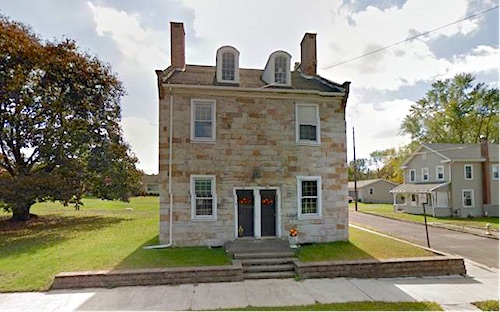
Cooper House, Nescopeck, Luzerne County.
COOPER HOUSE
200-202 West Third Street, Nescopeck, Luzerne County
THREAT: Demolition
In 1817, Christian Kunkle built a home using stone that was cut and dressed on Nescopeck Mountain and hauled by sledge to the site. Today, it is the oldest building in the area and a beloved local landmark. In the 1970s, local advocates convinced PennDOT to reroute a road project that might have demolished the house. Nescopeck Borough purchased the house with U.S. Department of Housing and Urban Development (HUD) funding and it’s slated for demolition. The Nescopeck Area Historical & Genealogical Society would like to purchase and preserve it as a tangible link to the history of the area, however, bureaucratic complications connected with the HUD funding make the borough council unwilling to sell. This property provides an opportunity to advocate for better preservation practices for HUD and the borough. Preservation Pennsylvania hopes to work with the borough to identify other solutions for the property and advocate against demolition.
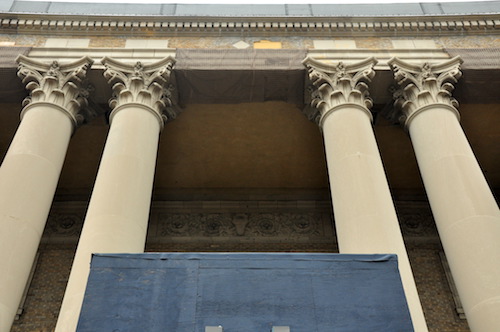
Meyers School, Wilkes-Barre, Luzerne County
ELMER L. MEYERS HIGH SCHOOL
341 Carey Avenue, Wilkes-Barre, Luzerne County
THREAT: Demolition
From 2008 through 2012, Preservation Pennsylvania worked with the National Trust for Historic Preservation and the United States Environmental Protection Agency on a program called, “Helping Johnny Walk to School: Sustaining Communities through Smart School Siting Policies.” This program encourages school districts to retain historic schools, to locate new ones in locations where a portion of students can walk or bike to school, and to use schools as a center of community activities beyond regular school hours. The Elmer L. Meyers High School, built in 1930, stands as a testament to the importance of continuing such programs. A Depression-era construction project, the school embodies the grand design of early 20th-century public architecture. It serves a diverse neighborhood, and is located in a central location that children can walk to. Based on feasibility studies that determined renovation costs were too high, the school will be demolished and replaced with a park. A new school will be constructed approximately four miles away. Wilkes-Barre Area Save Our Schools has been advocating for the school to remain in use. Preservation Pennsylvania hopes to work with the school board and the local community to encourage the building’s preservation, either as a school building or with a new community use.
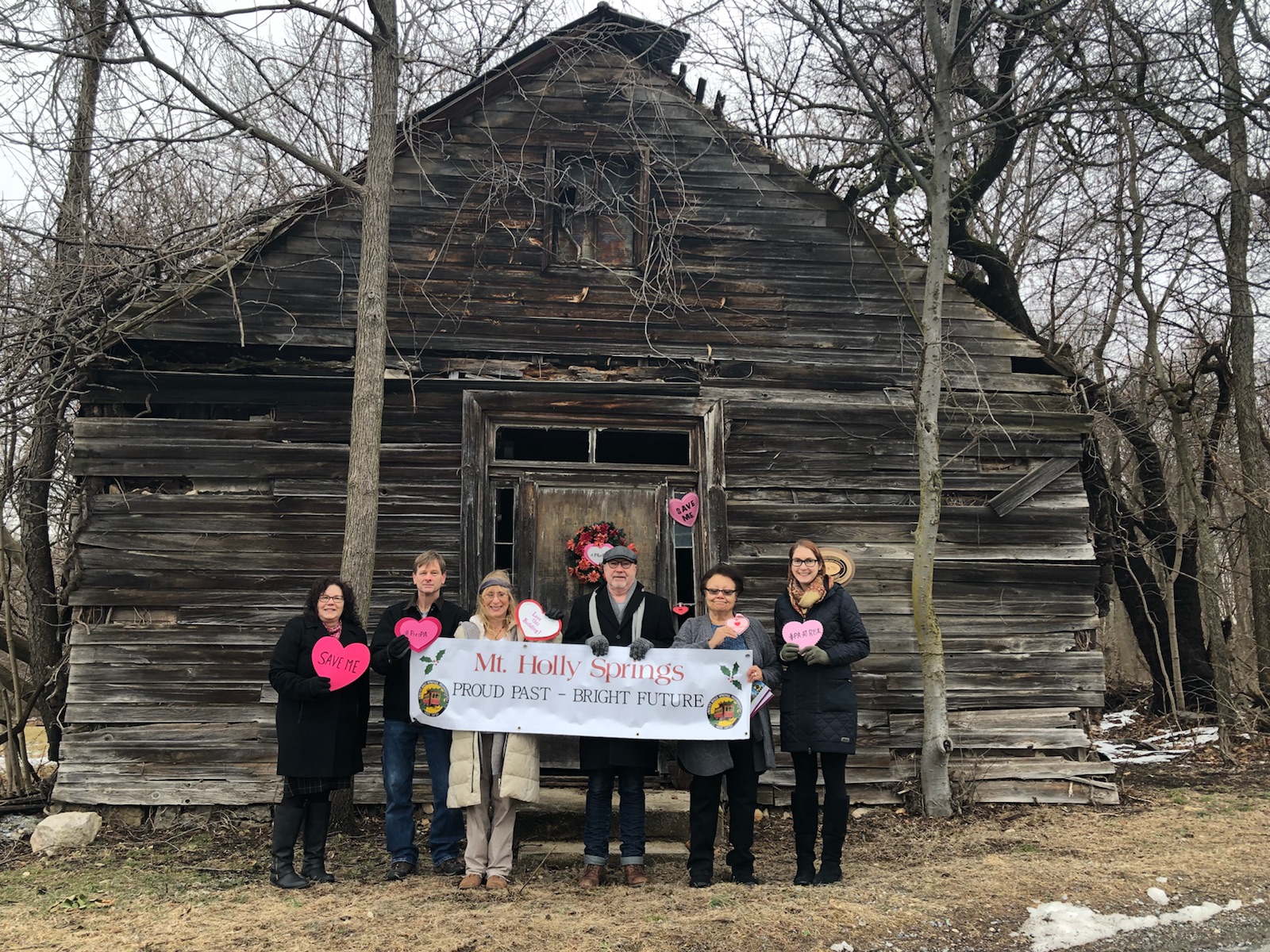
Mt Tabor AME Church in Mt. Holly Springs, Cumberland County.
MOUNT TABOR AME CHURCH & CEMETERY
Cedar Street, Mount Holly Springs, Cumberland County
THREAT: Physical Deterioration
To look at the weathered boards, the hole in the roof, the crack in the foundation, the invasive vegetation that seems to be holding up the structure – you’d think that no one cares for this abandoned church. No congregation has used this place since 1970. But, in this case, looks are deceiving. To a community of concerned stakeholders, this building represents the history of a once-thriving African American community founded by freed people escaping the south. To octogenarian Harriett Gumby, it is something more personal; family history that connects her to her grandfather, Elias Van Buren Parker. Parker, once an enslaved person, built the church around 1870 and is buried in the cemetery, along with fellow veterans who served in the United States Colored Troops during the Civil War.
The effort to preserve the site started simply, with a story. The Greater Carlisle Heart & Soul Project engages with local residents to identify the places that are important to the community. Harriett Gumby and her family brought to light a mostly undocumented history of the African American community in the area. The Mount Tabor AME Church and its cemetery is a vital link to that history. Preservation Pennsylvania will work with the Greater Carlisle Heart & Soul Project and local stakeholders on stabilizing the structure, resolving deed-related issues, and preparing a nomination for the National Register of Historic Places.
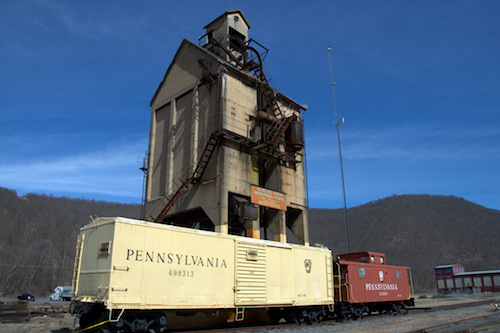
Pennsylvania Railroad Tipple in Clinton County.
FORMER PENNSYLVANIA RAILROAD TIPPLE
78 Industrial Park Road, Renovo, Clinton County
THREAT: Physical Deterioration
The tipple was built by the Pennsylvania & Erie Railroad in the early 1800s, and used to stock steam locomotives with coal, sand and water. The three-story concrete structure dominates the three-acre segment of the rail yard donated by the Clinton County Economic Partnership to be developed as a park. An important part of the Renovo area’s railroad history, the park is located on the northwest portion of the former rail yards, an area that was once completely covered by railroad tracks. With continuing demolition of the Renovo railroad yards and buildings, and the pending construction of a gas-fired power plant on this site, the tipple will be the only remaining evidence of the existence of the Pennsylvania Railroad shops. While railroad buffs visit the site to pose for photographs in front of the boxcar and caboose that sit on tracks in front of the tipple, security fencing surrounds the site to ward off vandals and daredevils who might attempt to climb the rusted ladders that lead to the control room at the top. Physical deterioration is taking a toll on the structure, from cracked and crumbling concrete to rusted metal components that need to be repaired or replaced. Restoration of this unique building demands professional preservation expertise in planning and engineering. Preservation Pennsylvania will assist with locating preservation experts and providing support for grant funding applications.
Want more information?
Members received a copy of the 2018 Pennsylvania At Risk publication in the mail. You can download a pdf at Preservation Pennsylvania’s website. It includes opportunities to get involved and support efforts at the local level.
About Preservation Pennsylvania
Sabra Smith is Communications Director at Preservation Pennsylvania. Preservation Pennsylvania publishes Pennsylvania At Risk annually to draw statewide attention to the plight of Pennsylvania’s historic resources; promote and support local action to protect historic properties; and encourage funding and legislation that supports preservation activities. Helping people to protect and preserve Pennsylvania’s endangered historic properties is a top priority for Preservation Pennsylvania. The organization is committed to engaging with people interested in working to preserve and rehabilitate these significant historic places.
Preservation Pennsylvania (insert hyperlink: http://preservationpa.org/ ) is the Commonwealth’s only statewide, private, nonprofit organization dedicated to the protection of historically and architecturally significant resources. For more information, visit the website at www.preservationpa.org or contact Preservation Pennsylvania at 717-234-2310.
Comment Policy
PHMC welcomes and encourages topic-related comments on this blog. PHMC reserves the right to remove comments that in PHMC’s discretion do not follow participation guidelines.
Commenters and Comments shall be related to the blog post topic and respectful of others who use this site.
Commenters and Comments shall not: use language that is offensive, inflammatory or provocative (this includes, but is not limited to, using profanity, obscene, or vulgar comments); disparage other commenters or people; condone illegal activity; identify the location of known or suspected archeological sites; post personal information in comments such as addresses, phone numbers, e-mail addresses or other contact details, which may relate to you or other individuals; impersonate or falsely claim to represent a person or an organization; make any commercial endorsement or promotion of any product, service or publication.
If you would like to comment on other topics not related to this blog post but related to PHMC, please fill out the PHMC Contact Us Form.
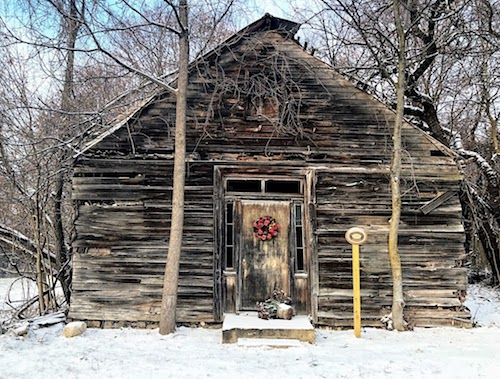
I looking this article this is good.
Why dont they donate the cooper house im disabled and would love to own a historic home i live on a beautiful piece of property in nescopeck in the country